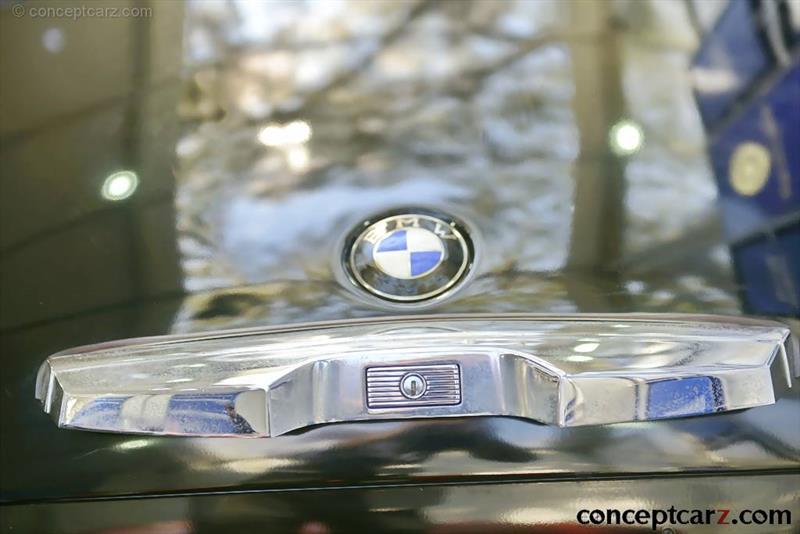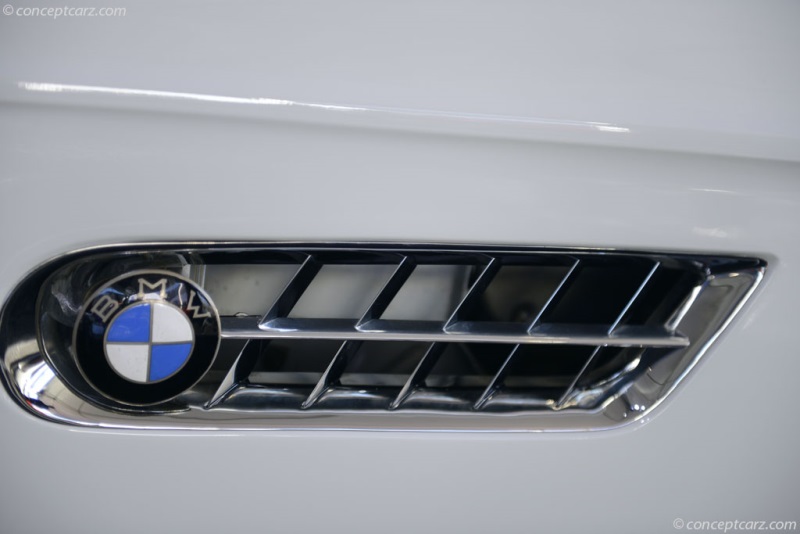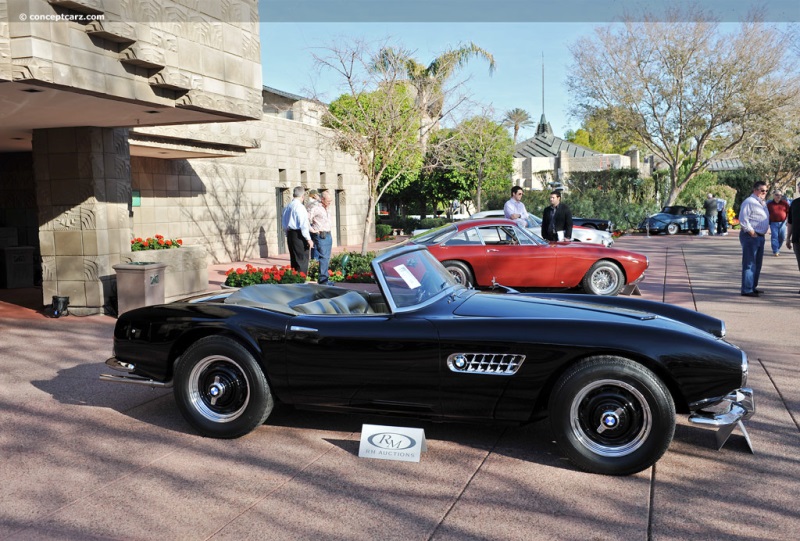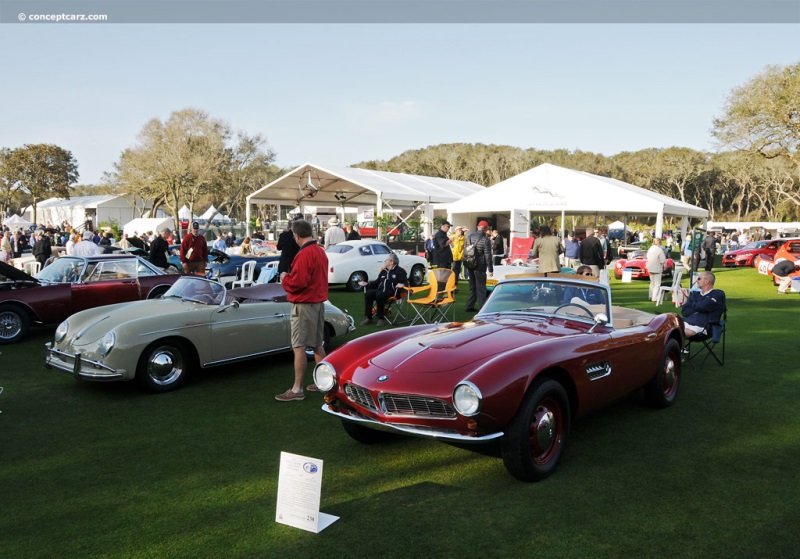The BMW 507 of the 1950s catered to transatlantic tastes and was unmistakably European in origin. It was styled by a New York-domiciled German ex-patriot and built in Germany, aimed at the United States market. Its inception is credited to Austrian-born entrepreneur Max Hoffman, at that time the US importer of various European makes. He convinced BMW that if they built a sports car to rival Mercedes-Benz's successful 300 SL, he could sell sufficient in the 'States to make the project viable.' Ernst Loof created the initial body design but it was rejected by Hoffman. Designs that followed were created by Count Albrecht von Goertz, an independent industrial designer who had worked for Raymond Loewy on the trend-setting Studebakers and had designed everything from furniture to fountain pens. Prior to the 507, Goertz had never styled an entire car.
Roadster
View info and historyAt the heart of the 507 was a 3.2-liter (3,168 cubic centimeter / 193.3 cubic inches), all-aluminum alloy, OHV V8 engine sourced from the existing 502 saloon. It had two Zenith 32NDIX two-barrel carburetors, pushrod-operated overhead valves, high lift camshafts, a chain-driven oil pump, a compression ratio of 7.8:1, and polished combustion chamber surfaces. It was backed by a close-ratio four-speed manual transmission with a standard rear-end ratio of 3.70:1. Optional final drive ratios of 3.42:1 and 3.90:1 were available. The engine was installed in a shortened, rigid box frame chassis for the 507, with a wheelbase size of 98 inches (down from 111.6 inches). The length measured 172.6 inches and the height was 49.5-inches. The mechanical design was handled by BMW stalwarts Fritz Fiedler and Alex von Falkenhausen. Alfin drum brakes of 11.2 inches provided the stopping power, with power brakes being offered as optional equipment. BMW 507s built near the close of production had front Girling disc brakes and rode on Pirelli 185VR16 Cinturato radial tires. The front suspension was comprised of parallel double wishbones with torsion bar springs and an anti-roll bar. In the back was a live axle with torsion bars located by a Panhard rod. A transverse A-arm controlled braking forces and acceleration. To enhance its sporty persona and reduce weight, the bodywork was formed from aluminum, and the finished car tipped the scales at around 1,280kg. With a top speed of around 200 km/h (125 mph) and zero-to-sixty mph (100 km/h) accomplished in 11 seconds, the 507 offered ample performance with nearly unmatched amounts of torque over a wide rev range. The vehicle's athletic stance was complimented by sweeping, harmonious lines and aggressive rear haunces, with a classic kidney grille at the front.
Roadster
Chassis #: 70203
View info and history
Auction entries : 1Visitors to the Frankfurt Motor Show in late 1955 were greeted by two new variations on the V8-powered 502 - the 503 and the 507. Both models had been influenced by Max Hoffman and designed by von Goertz, but it was the 507 that stole the show. Production of the 507 commenced in November of 1956, and by the time it was shown at the Waldorf-Astoria Hotel in New York in the summer of 1955, it carried a price tag of USD$9,000, falling far short of Hoffman's $5,000 price target. It cost more than double that of a Ford Thunderbird or Chevrolet Corvette, and ranked among the most expensive automobiles of its era, guaranteeing its exclusivity and limited lifespan. BMW built thirty-four examples of the Series I between 1956 and early 1957. Distinguishable features included a welded aluminum fuel tank of nearly 30 U.S. gallons located behind the rear seats, which limited passenger space and trunk (boot) space. The gasoline fumes were rather strong in the cockpit when the soft top was up or the hardtop in place. The Series II cars had a smaller, 17.4 U.S. gallon fuel tank located under the trunk, shaped around the space for the spare tire. Since these cars were almost entirely hand-formed, no two models were exactly the same. Eleven customers selected the optional hand-fabricated removable hardtop when new, and since these cars have so many differences from car-to-car, hardtops only fit the car for which it was made. 
Roadster
Chassis #: 70203
View info and history
Auction entries : 1Among the list of celebrity and prominent buyers were Elvis Presley (who purchased two), Hans Stuck, John Derek, and Georg 'Schorsch' Meier. A total of 252 examples plus two prototypes were built before production closed in 1959, falling far short of the intended production run of 5,000 units a year. The high sticker price was attributed to high production costs which did not help BMW recoup its investment, losing money on the project.Due to the vehicle's exotic nature, powerful engine, and limited production, it became a halo car for the company and later influenced the Z3 and Z4 models. Between 2000 and 2003, BMW built the exotic Z8 roadster in celebration and homage of the 507, previewed in October of 1997 at the Tokyo Motor Show by a concept called the Z07. The BMW 507's existence had been brief, but it was a pleasant reminder of the company's sporting heritage that had flourished with the successful BMW 328 prior to World War II.
by Daniel Vaughan | Feb 2022
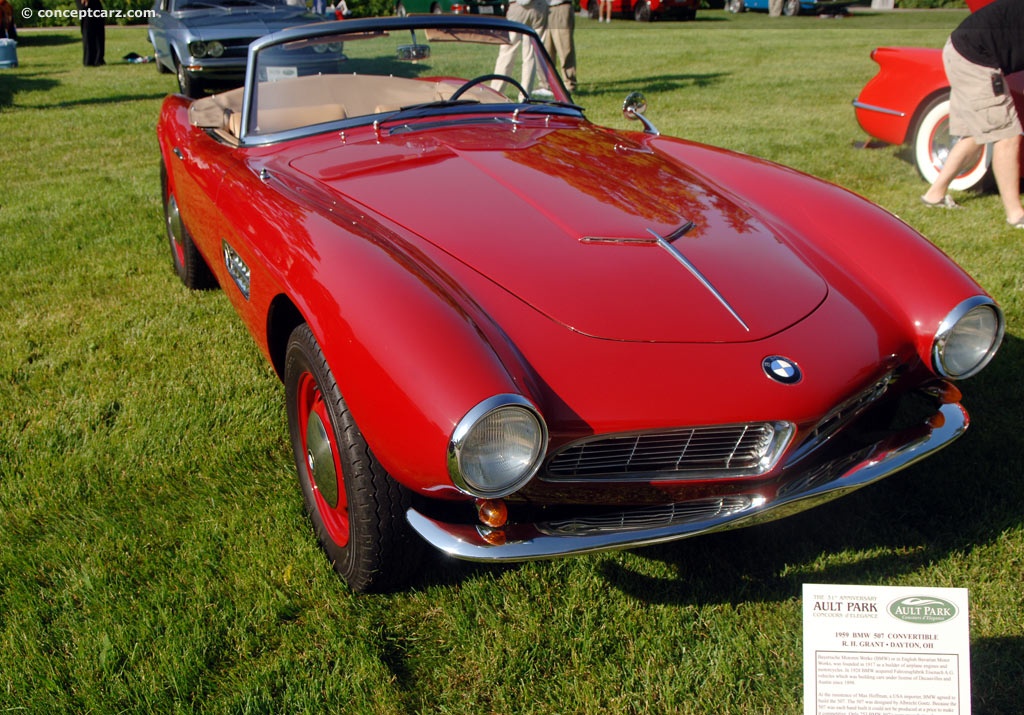
Roadster
View info and history
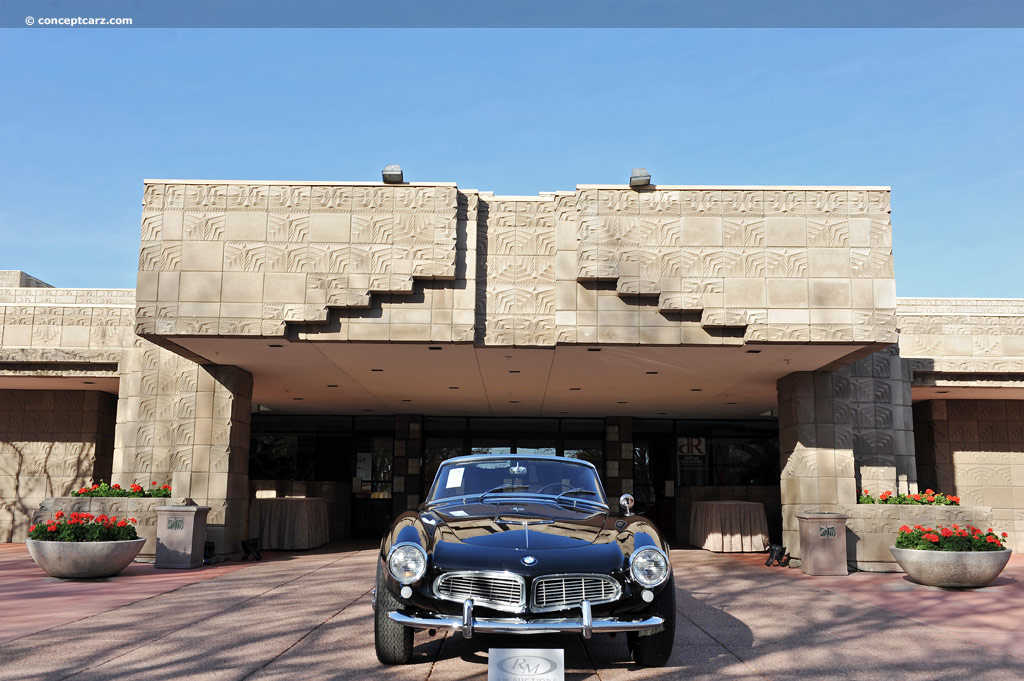
Roadster
Chassis #: 70203
View info and history
Auction entries : 1
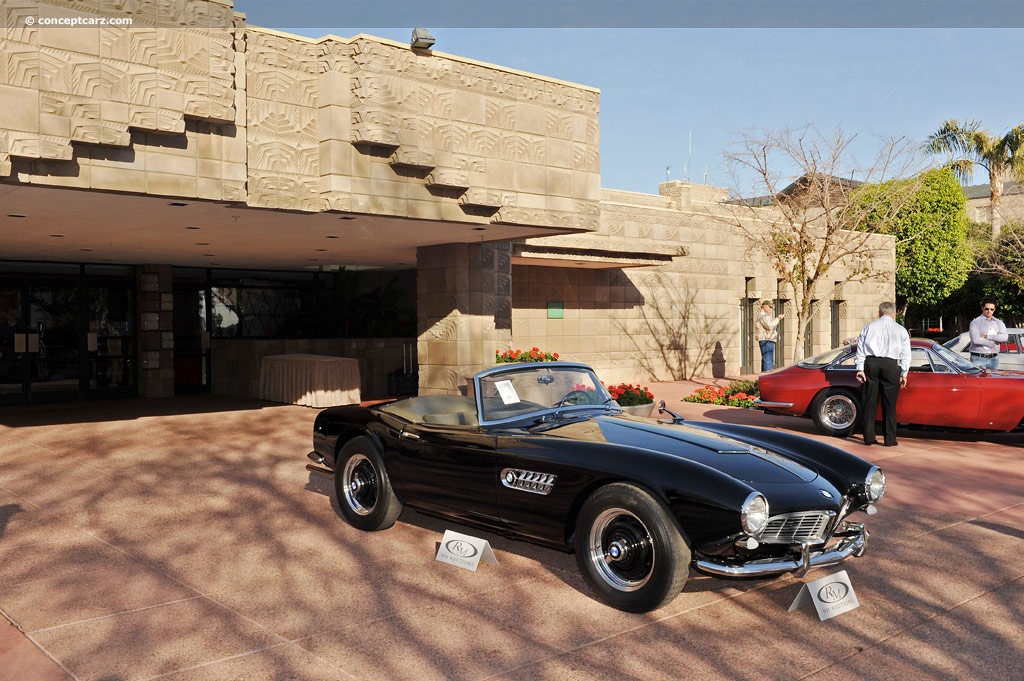
Roadster
Chassis #: 70203
View info and history
Auction entries : 1
by Daniel Vaughan | Feb 2022
Related Reading : BMW 507 History
The BMW 507 was produced from 1956 through 1959 with only 254 examples being produced. The styling was inspired by Max Hoffmann, Americas largest import car dealer, and designed by Albrecht von Goertz. Goertz was born in Germany and later migrated to America as Graf Albrecht von Goertz. His portfolio included marques such as Studebaker and Datsun. He was also responsible for designing the BMW 503. The....
Continue Reading >>
Continue Reading >>
Related Reading : BMW 507 History
In the 1930s BMW was famous for its top sports cars, but WWII put the marque so behind that they couldnt return to auto production until 1951. The sensational 507 was monumental in proving that BMW could produce durable, fast, superbly engineered road vehicles. Introduced at the Waldorf-Astoria Hotel in New York in 1955, the pricy BMW 507 roadster was created with the intent of improving BMWs....
Continue Reading >>
Continue Reading >>
Similar Vehicles
Similar Automakers
1959 BMW 507 Vehicle Profiles
Recent Vehicle Additions
Performance and Specification Comparison
Price Comparison
$1,050
$1,400
507 Specification Comparison by Year
Year
Production
Wheelbase
Engine
Prices
Related Automotive News

A Motor Car Fit For A King
Celebrity Favorite BMW 507 Originally Owned by King Constantine II of Greece Offered at Bonhams Monaco Sale
A 1959 BMW 507 Roadster (€2,100,000-2,600,000) originally owned by King Constantine II of Greece, the final king of Greece and godfather...

2024 BMW X5 and X6 World Premiere at The Amelia
Unveiling of the new 2024 X5 and X6, including PHEV and M Competition versions.
BMW Classic celebrating of 50 years of the 3.0 CSL Batmobile.
The only 1960 BMW 507 Sport Series II on display.
BMW.Williams FW22 Formula One race car featured in t...

Legendary German Classics from Mercedes-Benz, BMW, and Porsche Announced for Gooding & Company's Two-Day Amelia Island Auctions
The 2023 Amelia Island Auctions will include select blue-chip German offerings, including a 1962 Mercedes-Benz 300 SL Roadster, a 1955 Mercedes-Benz 300 SL Gullwing, a 1958 BMW 507 Series II, and a 1977 Porsche 9345, among others.
Gooding %26...

Eight of the coolest Volkswagen concept cars
Over the years, Volkswagen has debuted a wide range of concept cars that have opened windows into the future of car design, technology and performance. These dream machines are often built to test an idea, a vision andor showcase features that may one...

Gooding & Company Unveils Online Catalogue for Pebble Beach Auctions, Announces Additional Star Consignments
The catalogue features major new additions from the auction house, including a 1959 Ferrari 250 GT LWB California Spider Competizione, a 1998 Mercedes-Benz AMG CLK GTR Strassenversion, a 1957 Maserati 200 SI, and a 1961 Aston Martin DB4 GT.
The...

Ferrari Masterpiece and Legendary Jaguar Revealed for the Gooding & Company Scottsdale Auctions
The 1956 Jaguar D-Type campaigned by famed racing drivers Peter Blond and Jean Bloxham and the one-off 1965 Ferrari 275 GTB Speciale custom built for Battista Pininfarina will be highlights at the Gooding %26 Company Auctions this January.
SANTA...


























